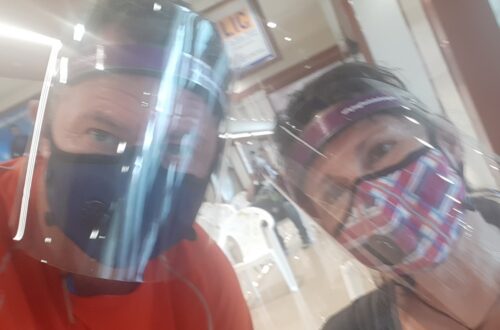
Being “Half Indian”
Finding a few weeks ‘free’ in our calendars about a month ago (before the current coronavirus lockdown), we planned a quick trip up to Hyderabad- just over an hour’s flight from our Kochi base.
The twin cities of Hyderabad and Secunderabad have merged together over the years, from their markedly different histories. Secunderabad developed directly under British rule, while nearby Hyderabad was ruled as a princely state in a subsidiary alliance with the British Raj. I knew that a large part of India wasn’t ruled directly by the British, but I didn’t know that it was quite so extensive. At the conclusion of British rule in 1947 there were 565(!) princely states covering 40% of India.
Hyderabad has some interesting sights and it’s famous for biriyani – I did not know that a simple rice dish could be so dee-lish. Of the many sights we visited some of the standout ones were the Qutb Shahi tombs, Golconda Fort, and the Charminar monument enjoying the hustle and bustle of the market area around it.
But I had another compelling reason to want to visit Hyderabad. My father, Brian, was actually born in Secunderabad, India. We joke that this makes me half Indian, isn’t it?! True story – there have been a couple of times over the years when I’ve told people my dad was born in India, they’ve looked me closely up and down for visual evidence and said, “Really?!”. Ok, to be fair, his parents were both British and just happened to be in India at the time of his birth. Back in 1936 Secunderabad had already been a British cantonment (permanent military station) for over a hundred years and, at one point, it was the largest cantonment in British India. My grandfather, George Watt, was in the King’s Dragoon Guards in the British Army at the time, having only recently been transferred from his previous posting in Cairo.
Over the years I have looked for opportunities to connect with my father’s past and visiting places that he had some connection with adds purpose to our travel. I wasn’t sure if there would be much to see, but it seemed silly to be so close and to not visit the city of his birth and, if at all possible, actually visit the place that he was born. His birth certificate shows his place of birth as the Military Hospital in Secunderabad.

A funny side story about my dad. Since he lived the first 11 years of his life in India, he spoke fluent Hindi, learning from the house staff, including presumably the gentleman in the above photo. It was a pretty unusual language to speak in NZ and he loved the rare opportunity to speak it. It caused him some amusement later in life though, as he spoke a quite basic “servants” version of the language!
Shortly after his birth, my father’s family moved to Cawnpore (now known as Kanpur), another large British cantonment in the north. History buffs may know of the horrific Siege of Cawnpore which followed the (equally horrific) 1857 Indian Rebellion. We actually visited this house on a family holiday to India back in 1982. I dug out some photos from that family holiday in 1982.
One morning we took an Uber out to the military hospital in the hope of getting to see inside the facility, maybe even to see the maternity wing where he was born. I wasn’t optimistic that I’d find much… after all, a lot of water has passed under this bridge, including Indian independence and expulsion of all the Brits! But I felt that I’d regret it if I didn’t at least have a look. It’s still a military hospital, even if a different military is now running it! Initially, the soldier at the ancient stone portal was positive to my story and I felt just seconds away from being let into the walled complex to seek out anything that was still standing from when he was born there. Unsure, the soldier sought his superior’s approval. The request then leap-frogged up a further couple of levels before a stern-looking sergeant arrived on his scooter and told me firmly “not allowed” on not one, but two counts. One; no foreigners. Two; military only.

A frustrated tear slipped out. So close but thwarted by the legendary Indian civil service bureaucracy. I like to think that in other places I may have been allowed in or shown around by an understanding figure, but our Indian friends like their rules and revel in the power to impose them. Thanking the sergeant with my words but not my heart, I retrieved my ID. We tried to sneak a photo of the main entrance to the Military Hospital on the way out, and got a thorough telling off there too!

Frustrated, both in terms of the inflexibility and the effort expended to get there, we decided to try and find somewhere nearby to visit. Just a few hundred metres from the hospital was the small neo-gothic All Saints church, built-in 1860 “to serve the British Cantonment”, which is recorded as the first permanent structure in the area. Wikipedia also tells me that Queen Elizabeth II visited in 1983! In a way, it was an accidental find but a nice place to reflect for a while, especially since the walls were lined with polished brass plaques to many of the British regiments that had served there over the years.
So our visit to Secunderabad was not entirely wasted and still served as an opportunity to connect with my father’s past. Needless to say, my father’s family, and almost all the Brits, were expelled from India on independence in 1947, taking them to Australia and then New Zealand. This resulted in me being born a Kiwi and not half Indian after all.
Follow and like us to be notified of future blogs!















